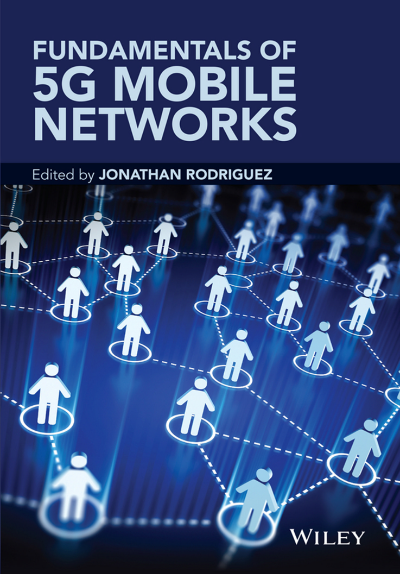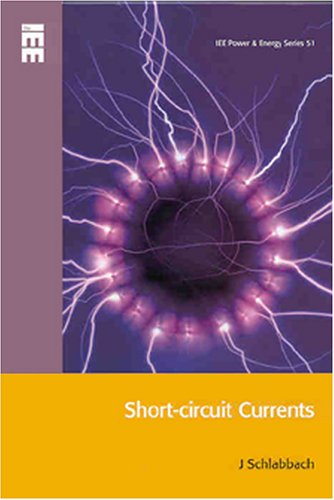| Book Name: | [PDF] Fundamentals of 5G Mobile Networks by Jonathan Rodriguez |
| Category: | Telecommunication Books |
| Language: | English |
| Format: | |
| Free Download: | Available |
Fundamentals of 5G Mobile Networks Edited by Jonathan Rodriguez PDF Free Download

| Book Details : | |
|---|---|
| Language | English |
| Pages | 336 |
| Format | |
| Size | 6.16 MB |
Fundamentals of 5G Mobile Networks by Jonathan Rodriguez
Author of Fundamentals of 5G Mobile Networks PDF
Jonathan Rodriguez received his MSc and Ph.D. degrees in Electronic and Electrical Engineering from the University of Surrey, United Kingdom, in 1998 and 2004, respectively. In 2005, he became a researcher at the Instituto de Telecomunicações, Aveiro, Portugal, and a Wireless Communications Scientific Area member.
In 2008, he became a Senior Researcher and was granted an independent researcher role where he established the 4TELL Group (http://www.av.it.pt/4TELL/), a visionary research group developing innovation for next‐generation mobile networks, with key interests on green communications, cooperation, security, radio frequency design, and 5G.
Since its inception, the group has steadily grown and now Dr. Rodriguez is responsible for managing 36 research staff, which includes the supervision of 10 Ph.D. students and 10 post-doctoral researchers.
Since 2009, he has become an Invited Professor at the University of Aveiro, where he teaches specialist modules on wireless communications as part of the integrated Master’s course in Electrical and Electronic Engineering.
In 2007, he coordinated the international Eureka Celtic LOOP project and was then coordinator for the FP7‐ICT C2POWER project.
He has also served as General Chair for the ACM‐sponsored MOBIMEDIA 2010 (6th International Mobile Multimedia Communications Conference), Co-Chair for the EAI sponsored WICON 2014 (8th International Wireless Internet Conference) and was workshop chair on 17 occasions in major international conferences that include IEEE Globecom and IEEE ICC, among others.
He is the author of more than 300 scientific works, that include 50 peer‐reviewed international journals, and five edited books.
He was responsible for winning 30 research grants with a project portfolio in excess of 5m €. His professional affiliations include Member of IET, Senior Member of the IEEE, and Chartered Engineer (CEng).
5G Mobile Networks Contents
- Drivers for 5G: The ‘Pervasive Connected World’
- The 5G Internet
- Small Cells for 5G Mobile Networks
- Cooperation for Next-Generation Wireless Networks
- Mobile Clouds: Technology and Services for Future Communication Platforms
- Cognitive Radio for 5G Wireless Networks
- The Wireless Spectrum Crunch: White Spaces for 5G?
- Towards a Unified 5G Broadcast‐Broadband Architecture
- Security for 5G Communications
- SON Evolution for 5G Mobile Networks
- Green Flexible RF for 5G
- Conclusion and Future Outlook
Preface to Fundamentals of 5G Mobile Networks eBook
The first wave of 4th Generation systems is finally being deployed over Europe, providing a vehicle for broadband mobile services at any time, any place and anywhere.
However, mobile traffic is still growing and the need for more sophisticated broadband services will further push the limit on current standards to provide even tighter integration between wireless technologies and higher speeds, requiring a new generation of mobile communications: the so‐called 5G.
The evolution towards 5G is considered to be the convergence of Internet services with legacy mobile networking standards, leading to what is commonly referred to as the ‘mobile Internet’ over Heterogeneous Networks (HetNets), with very high connectivity speeds.
Green communications seem to also play a pivotal role in this evolutionary path, with key mobile stakeholders driving momentum towards a greener mobile ecosystem through cost‐effective design approaches.
In fact, it is becoming increasingly clear from new emerging services and technological trends that energy and cost‐per‐bit reduction, service ubiquity, and high‐speed connectivity are becoming desirable traits for next‐generation networks.
Until now, the notion of 5G was covered in a veil of mystery, with several stakeholders proposing disruptive ideas towards shifting the market to their customer base and expertise.
This book aims to harness the fragmented views on 5G mobile communications to paint a more focused technology roadmap, putting in place a clear set of challenges and requirements to address the so‐called 1000x challenge.
Drawing from the editor’s vast experience in European research and of being at the forefront of 5G communications, this book aims to be the first of its kind to talk openly about 5G, and will hopefully serve as a useful tool for all 5G stakeholders, in academia and industry alike, to draw inspiration towards taking further innovative strides in this fast‐evolving arena.
Introduction to Fundamentals of 5G Mobile Networks PDF
Information technologies have become an integral part of our society, having a profound socio‐economic impact, and enriching our daily lives with a plethora of services from media entertainment (e.g. video) to more sensitive and safety‐critical applications (e.g. e‐commerce, e‐Health, first responder services, etc.).
If analysts’ prognostications are correct, just about every physical object we see (e.g. clothes, cars, trains, etc.) will also be connected to the networks by the end of the decade (Internet of Things).
Also, according to a Cisco forecast of the use of IP (Internet Protocol) networks by 2017, Internet traffic is evolving into a more dynamic traffic pattern.
The global IP traffic will correspond to 41 million DVDs per hour in 2017 and video communication will continue to be in the range of 80 to 90% of total IP traffic.
This market forecast will surely spur the growth in mobile traffic with current predictions suggesting a 1000x increase over the next decade.
On the other hand, energy consumption represents in today’s network a key source of expenditure for operators that will reach alarming levels with the increase in mobile traffic, as well as a factor that is widely expected to diminish market penetration for next‐generation handsets as they become more sophisticated and power-hungry.
These two attributes in synergy have urged operators to rethink the way they design, deploy and manage their networks in order to take significant steps towards reducing their capital and operating expenditures (Capex and Opex) in next‐generation mobile networks what is generally referred to as 5G or more specifically 5G mobile.
In order to be ready for the 5G challenge, key mobile stakeholders are already preparing the 5G roadmap that encompasses a broad vision and envisages design targets that include: 10–100x peak‐rate data rate, 1000x network capacity, 10x energy efficiency, and 10–30x lower latency paving the way towards Gigabit wireless.
The research community at large has started to evolve the concept of 5G based on this clear set of widely accepted design targets.
Early prominent scenarios are starting to emerge, where industrial stakeholders are proposing disruptive ideas towards shifting the market to their customer base and expertise.
All the ideas are promising and could play a paramount role in the deployment of 5G mobile networks, with many of these concepts generated through white papers, international research efforts, and technology fora.
However, the work reported so far is fragmented and lacks cohesion, based on evolving specific scientific and technology strands such as small cells, network coding, or even cloud networking, to name a few.
Metaphorically, these works can be perceived as pieces of the 5G jigsaw but, without a holistic perspective in place, it becomes difficult to ‘envisage and build the jigsaw’; without adopting an interdisciplinary design approach, it becomes even more difficult to ‘even fit two pieces together’.
It is clear that without a concerted view on the fundamentals of 5G, we will build a sporadic and disjointed system, providing incremental improvement at best.
So what are the fundamentals of 5G? Well, in essence, if we abstract the technological details, these are the basic building blocks or axioms on which we can build to evolve incremental improvements and represent the most basic platform on which to deliver new services and applications.
While building upon 4G systems, in the most basic sense, 5G is an evolution considered to be the convergence of Internet services with legacy mobile networking standards leading to what is commonly referred to as the ‘mobile Internet’ over Heterogeneous Networks (HetNets)
With very high‐speed broadband. Green communications also seem to play a pivotal role in this evolutionary path with key mobile stakeholders driving momentum towards a greener mobile ecosystem through cost‐effective design approaches.
Therefore, in essence, the scope of 5G is not only the mobile and wireless pieces, but also includes the wide-area coverage network; or in other words, the Internet will also play a pivotal role in the fabric of the 5G technology ecosystem.
Understanding the Internet today, its limitations, and the way forward, will assist us with our interdisciplinary design and place a fence around the 5G mobile system solution space based on the requirements and mechanics of the overlay networks.
Indeed, if we can take a step back and take a snapshot of the ‘holistic picture’ then we are able to nicely design and shape the pieces of our jigsaw, so that they fit together seamlessly, and engineer the system that we had originally intended in the right timeframe.
This mindset provided the inspiration for this book and the title Fundamentals of 5G Mobile Networks. This book aims to be the first to talk openly about 5G and unveil the shroud of mystery surrounding this topic.
We aim to harness ongoing international research efforts in this field to provide a fundamental vision for 5G mobile communications based on current market trends, proven technologies, and the European research roadmap.
Taking a step inside the vision, we elaborate further on major technology enablers that appear to be strong candidate technologies to form part of the 5G mobile components and that include cognitive radio, small cells, cooperation, security, Self‐Organising Networks (SON) and green multi‐mode RF (Radio Frequency); this list is not exhaustive but these are somewhat proven technologies that have received wide interest so far.
We discuss the mobile network component of 5G and consider the Internet perspective to allow us to understand how the two can work in synergy to provide end‐to‐end connectivity for future 5G services.
Migrating to the application and service perspective, we investigate the notion of Mobile Clouds as a technology and service for future communication platforms that seem to be playing an increasingly important role in terms of ‘hot applications’ for 5G.
In fact, cloud‐based resource‐sharing has witnessed a tremendous growth period and now comprises many potential resources that can be shared within a specific cloud or amongst interconnected clouds.
Emanating from this notion is mobile cloud computing, which introduces mobile devices as nodes accessing services in cloud‐based resource pools.
This paradigm elaborates on a plethora of possibilities for sharing resources and connectivity, opening new business opportunities for mobile stakeholders.
In addition to cloud services, the 5G mobile network is potentially being perceived as the vehicle for delivering next‐generation TV services.
In fact, TV broadcasting and mobile broadband are undoubtedly essential parts of today’s society, and both of them are now facing tremendous challenges to cope with future demands.
Regardless of whether consumers are using digital satellite or DTT (Digital Terrestrial Television) to receive their TV content, neither of these platforms currently meets the needs of a growing non‐linear, truly on‐demand consumption paradigm, and therefore hybrid solutions that include the mobile network are being sought that can provide a ‘win‐win’ Broadcast‐Broadband (BC‐BB) convergence solution for 5G, and thus deserve mention.
The final chapter will bring together all the pieces of the 5G jigsaw to reveal a snapshot of current progress towards the 5G communication platform, outlining the existing challenges that still lie ahead, particularly towards energy efficiency.
The chapter is concluded by proposing a vision for 5G mobile based on legacy market trends.
We hope this book will serve as a useful reference for early‐stage researchers and academics embarking on this 5G odyssey, but beyond that, target all major 5G stakeholders that are working at the forefront of this technology to provide inspiration towards rendering groundbreaking ideas in the design of new 5G systems.
The book has the following layout to guide the reader through this 5G adventure. In the first instance, the aim is to provide the design requirements currently driving the technology roadmap of ‘5G Mobile’.
However, in order to see where we want to go, we also need to appreciate where we are and therefore, chapter 1, entitled ‘Drivers for 5G: the ‘Pervasive Connected World’, kicks off with an overview of mobile systems to place a marker on the current commercial status of mobile telephony, that being 4G (4th Generation systems).
In fact, the first wave of 4G systems is finally being deployed over Europe, providing a vehicle for broadband mobile services anytime and anywhere.
However, mobile traffic is still growing and the need for more sophisticated broadband services will further push the limit on current standards to provide even tighter integration between the wired and wireless world, providing a fibre‐like experience for mobile users over a future Internet of Things, requiring a new generation of networking capability collectively known as 5G.
To mold a future 5G system, it is becoming increasingly clear from new emerging services and technological trends that energy and cost‐per‐bit reduction, service ubiquity, and high‐speed connectivity are becoming desirable design traits, with the first wave of this technology expected to reach the marketplace around 2020.
In this first chapter, we address current international research efforts on 5G (in Europe, the United States, and East Asia), and beyond that propose a 5G mobile architecture and set of system requirements.
The architecture will then provide the bridge towards the set of scientific and technology enablers considered in this book, each one considered timely and a piece of the 5G jigsaw.
In this book, we not only address future challenges and the technical roadmap towards 5G mobile but also take a step back and take a bird’s‐eye view of the network evolution on a grander scale, since the wide-area coverage network is also considered a piece of the 5G jigsaw.
Without any major improvements here, any enhancements that we squeeze from the mobile network will not translate back to the end-user in terms of Quality of Experience (QoE); the latter a rather more widely adopted term to reflect the actual perceived user quality.
Download Fundamentals of 5G Mobile Networks PDF
Author(s): Jonathan Rodriguez
Publisher: Wiley
Year: 2015
ISBN: 1118867521
Download Fundamentals of 5G Mobile Networks by Jonathan Rodriguez PDF Free
Related More Books
See More POST On : Engineering Books









![[PDF] Draw Buildings and Cities in 15 Minutes Draw Buildings and Cities in 15 Minutes pdf](https://www.freepdfbook.com/wp-content/uploads/2021/06/Draw-Buildings-and-Cities-in-15-Minutes-218x150.jpg)








![[PDF] Digital Image Processing An Algorithmic Introduction Using Java Digital Image Processing An Algorithmic Introduction Using Java](https://www.freepdfbook.com/wp-content/uploads/2022/06/Digital-Image-Processing-An-Algorithmic-Introduction-Using-Java.jpg)




![[PDF] 43 Years JEE ADVANCED + JEE MAIN Chapterwise & Topicwise Solved Papers 43 Years JEE ADVANCED (1978-2020) + JEE MAIN Chapterwise & Topicwise Solved Papers Physics PDF](https://www.freepdfbook.com/wp-content/uploads/2022/03/43-Years-JEE-ADVANCED-1978-2020.jpg)

![[PDF] Problems in Physical Chemistry for JEE (Main & Advanced) Problems in Physical Chemistry for JEE (Main & Advanced) Free PDF Book Download](https://www.freepdfbook.com/wp-content/uploads/2022/03/Problems-in-Physical-Chemistry-for-JEE-Main-Advanced.jpg)
![[PDF] Engineering Physics (McGraw Hill)](https://www.freepdfbook.com/wp-content/uploads/2021/05/bafc8c2685bb6823a9c56134f7fba5df.jpeg)

![[PDF] Engineering Chemistry By Shashi Chawla](https://www.freepdfbook.com/wp-content/uploads/2022/05/Theory-And-Practicals-of-Engineering-Chemistry-By-Shashi-Chawla-free-pdf-book.jpeg)
![[PDF] Chemistry: An Introduction to Organic, Inorganic & Physical Chemistry Chemistry: An Introduction to Organic, Inorganic & Physical Chemistry](https://www.freepdfbook.com/wp-content/uploads/2022/04/Chemistry-An-Introduction-to-Organic-Inorganic-Physical-Chemistry.jpg)
![[PDF] Essentials of Physical Chemistry Essentials of Physical Chemistry Free PDF Book by Bahl](https://www.freepdfbook.com/wp-content/uploads/2022/04/Essentials-of-Physical-Chemistry-bahl.jpg)
![[PDF] Biological control of plant-parasitic nematodes: soil ecosystem management in sustainable agriculture Biological control of plant-parasitic nematodes: soil ecosystem management in sustainable agriculture](https://www.freepdfbook.com/wp-content/uploads/2022/05/Biological-control-of-plant-parasitic-nematodes-soil-ecosystem-management-in-sustainable-agriculture.jpg)
![[PDF] Human Anatomy: Color Atlas and Textbook Human Anatomy: Color Atlas and Textbook Free PDF Book](https://www.freepdfbook.com/wp-content/uploads/2022/05/Human-Anatomy-Color-Atlas-and-Textbook.jpg)
![[PDF] Concepts of Biology Book [Free Download]](https://www.freepdfbook.com/wp-content/uploads/2022/05/Concepts-of-Biology.jpg)
![[PDF] Essentials of Biology [Free Download] Essentials of Biology Free PDF BOok Download](https://www.freepdfbook.com/wp-content/uploads/2022/05/Essentials-of-Biology-Free-PDF-Book-Downlaod.jpg)
![[PDF] Human Biology Book [Free Download]](https://www.freepdfbook.com/wp-content/uploads/2022/05/PDF-Human-Biology-Book-Free-Download.jpg)


